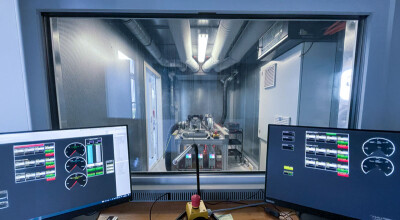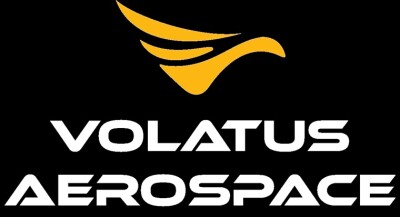Nowadays, the interaction between a user and a drone, and a drone and its hardware is mediated by software. For that reason, developing secure, dependable, well-implemented, and feature-rich software is critical to fly safely and collect the necessary data during a commercial operation. While, on the surface, proprietary software seems to tick all those boxes, the drone industry is currently shifting its focus to open-source technologies.
In 2009, we saw the birth of the Pixhawk* (which became PX4 in 2011) and the ArduPilot (APM) flight-control projects to enable everybody to freely create and use trusted, autonomous, unmanned vehicle systems. As open-source projects, it meant, and still means, the platform’s software source code was freely available on the Internet, providing everyone with easy access to code, software, designs, and features that could be shared, modified, redistributed, and implemented into developers’ applications and hardware, under certain licensing terms - such as GPLv3 for APM and BSD-3 for PX4. While these are two of the leading open-source projects, there are others such as the industry-standard communication protocol MAVLink, QGroundControl, and more.
In 2014, the Dronecode Foundation was founded to make sure all drone software created in an open-source environment stays that way and remains non-discriminative while building a sustainable ecosystem for critical drone components and fostering a collaborative community of top developers, end-users, and vendors. Today, as a non-profit organization that belongs to the Linux Foundation, Dronecode has set the standards over the last decade in the drone industry with PX4, MAVLink, and Pixhawk.
Still in 2014, a DroneAnalyst report from Colin Snow mentioned that thousands of hobbyists and researchers were taking advantage of open-source platforms, whereas most commercial drone operators were using proprietary drone software. For the latter, this was mostly due to the misconception that open-source software couldn’t get certified to be used commercially, and that it was harder to work with than proprietary software since it “lacked” in various fields, such as quality and tech support. This is something that Craig Elder, Community Manager at ArduPilot, addressed back when ArduPilot left the Dronecode Project.
“People have this idea that open-source is inferior, and yet people trust all of their banking transactions to open-source software. Most of the computers that we interact with in our daily lives are all using open-source software. The idea that it is somehow inferior is a long-time out-of-date concept,” Elder said. “In the past, you could buy a commercial autopilot, but it was US$10,000 for a cheap one and $100,000 for a good one. By 2012-2013, ArduPilot had advanced to the point where it had most of the features that those more expensive autopilots did, and in a lot of cases the flight performance had exceeded the capability of those commercial autopilots for more than an order of magnitude less money.”
Also back in 2014, Chris Anderson said his company 3DRobotics, the developer of APM, and its ecosystem of partners were in the process of “Building the Android of UAVs.” That’s quite a statement since Android was, and still is, the world’s leading mobile operating system. However, DroneAnalyst’s Head of Research David Benowitz’s recent “The Rise of Open-Source Drones” report hints that Anderson was probably right.
The report “breaks down data and shares insights into the trajectory of the open-source drone ecosystem and explores the impacts of open-source in the coming years”. In it, Benowitz mentions that “the drone open-source community is not just here to stay but has shaped the industry from its very beginning”, and “drone brands leveraging open-source technologies account for 16% of all commercial drones sold and over half (60%) of all non-DJI drones”.
One company pushing for that growth with the creation of an open-source ecosystem is Auterion. With PX4 growing into a huge open-source community over the years (with more than 10,800 developers in 2020), Lorenz Meier, the Pixhawk/PX4 creator, co-founded Auterion with Kevin Sartori in 2017 to maintain the open-source ecosystem and distribution model, supporting other companies to use it in their products and services. In 2020, the company launched Skynode and partnered with Freefly to launch Astro, a versatile enterprise drone platform.
Auterion’s Skynode is built on top of open standards like FMUv5x, PX4, and MAVLink to enable drone manufacturers to rapidly enter new markets by making their products compatible with an ecosystem of payloads, components, services, and workflow integrations that give companies the tools they need to deploy large fleets of drones. More recently, Auterion partnered with Maxon to integrate Skynode with Maxon’s drone motors, offering NDAA-compliant avionics and propulsion system integration, which further strengthens its product’s reliability, security, and trust.
“While some drone companies are focusing on proprietary technology in order to compete, we believe no single company can challenge DJI's monopoly,” Sartori told ZDNet. “There is a clear market need for a common operating system for commercial drones, and the lack of a unifying standard leads to complications with interoperability between drones and services - key components of any scalable drone program. Open-source standards help drone service providers and manufacturers focus their limited resources on differentiators, rather than having to reinvent the wheel building underlying infrastructure. This, in turn, lowers overhead costs and ultimately drives more democratic competition based on pure innovation, not resources.”
Additionally, the growing adoption of open-source platforms also comes down to other factors, especially the ongoing security concerns around DJI’s products, and the introduction of the American Drone Security Act, preventing federal departments and agencies from purchasing commercial off-the-shelf unmanned aircraft systems manufactured or assembled in countries linked to national security concerns. Furthermore, the DIU’s decision in 2020 to standardize on PX4 and MAVLink for small, unarmed reconnaissance drones as part of the Blue sUAS architecture also helped to solidify open-source software as the standard to replace DJI drone products.
As Sartori wrote, “drones don’t deliver packages or collect mapping data, software does”. Auterion believes that, as standardization increases across the drone industry, “it’s clear that the drones that deliver your packages and collect mapping data will be open, and software-defined”. As more developers and organizations continue to become users and contributors to the PX4 open-source project, the faster the entire industry can accelerate innovation and deliver value to end-users beyond what any single company can achieve alone.
Auterion is committed to growing and supporting the PX4 ecosystem and continues to lead in the number of contributions for the third year in a row. Auterion made up 56% of all contributions in 2020, up from 51% in 2019, and 33% in 2018. As well as contributing to the code base, Auterion is focused on fostering the adoption of common standards across the industry, to bring alignment and standardization across communication protocols, payload, component, and services integrations.
“I think open-source is where key components will come from, and where everyone will be able to build additional solutions for all verticals upon those components,” Romeo Durscher, former Senior Director of Public Safety Integration at DJI, said after joining Auterion in early 2021. “Open-source is so much more powerful than having a closed system, even if we look at an ecosystem like DJI – if we have an open-source system, we have transparency, security, safety, and the ability to create more and better-focused solutions.”















Comments